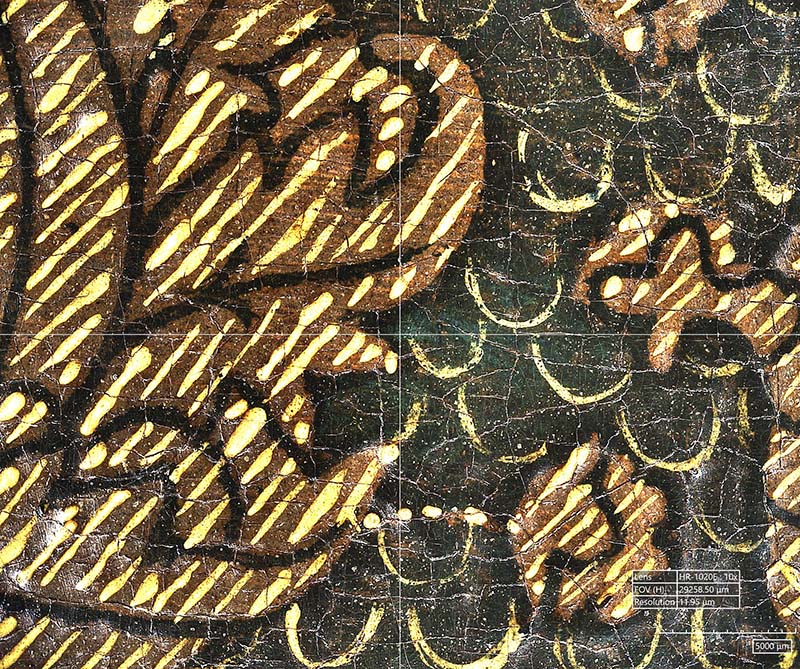
Beyond the Artist’s Eye
Giulia Campagnari, Assistant Paintings Conservator explains how the new Hirox 3D digital microscope has enabled her to examine the surfaces of artworks and get a better understanding of an artist’s painting techniques using its incredibly high magnification.
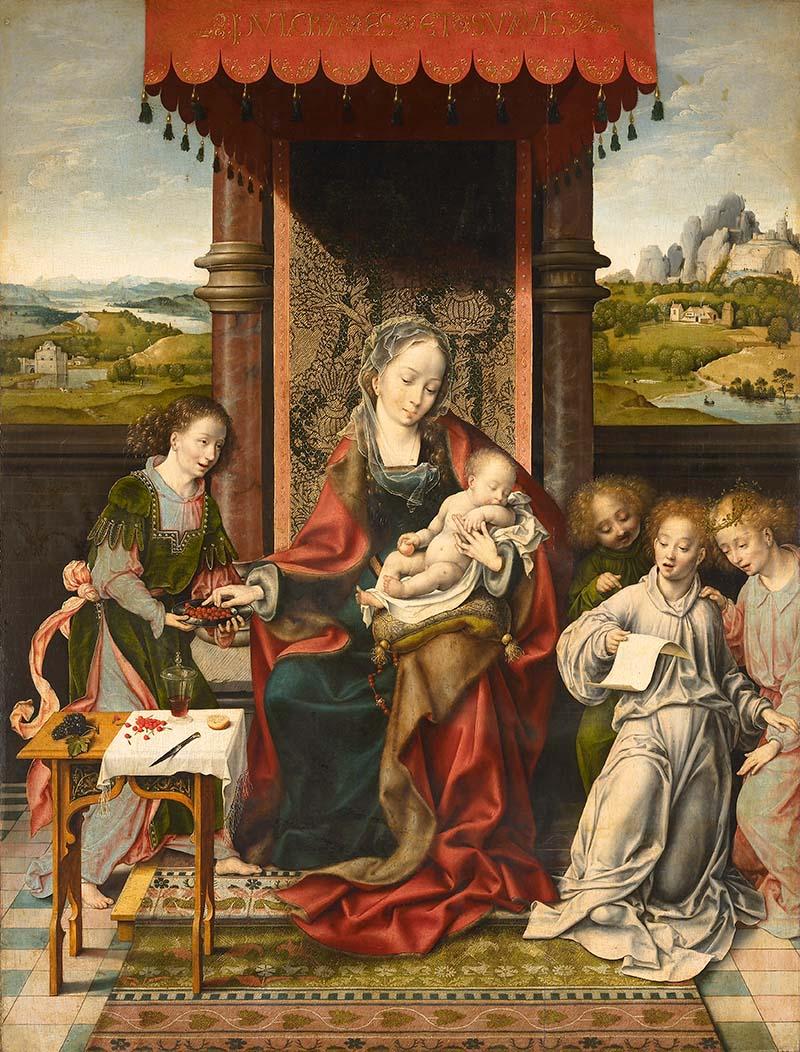
Joos van Cleve’s ‘The Virgin and Child with Angels’, c.1520
We were able to acquire the Hirox microscope thanks to funding from the Capability for Collections Fund allocated by the Arts and Humanities Research Council. The refurbishment of some of our galleries has given us the opportunity to work on several paintings which haven’t been worked on for some time. Joos van Cleve’s ‘The Virgin and Child with Angels’, was the first artwork that the team decided to investigate with help from the Hirox 3D digital microscope.
Joos van Cleve was one of the leading artists of the early 16th century in Antwerp. He was able to create extremely detailed artworks and was skilled in the use of oil paint which was a new technique at the time. This painting shows the Virgin Mary with the Christ Child sucking his arm while asleep, surrounded by angels singing and handing a bowl of cherries to the Virgin. The canopied throne is placed on a rug and is set against a populated mountainous landscape.
Northern European paintings of the early 16th century are typically characterized by intricate details within the main composition, with particular attention paid by the artist to render precious fabrics, clothing, and items with the most accurate precision. Investigating these details and the painting technique with the Hirox 3D Digital Microscope gives us the possibility of understanding how the artist applied the paint to create visual effects to imitate different materials.
The examination of the painted surface at the highest magnification values (of 50x and over) allows us to investigate in more depth the materials used by the artist, making pigment particles visible, and allowing us to formulate some hypotheses about their nature.
Embroidered dress margins, pearls, fur linings, woven images and patterns on carpets, iridescent silks and elaborate damasks with golden threads are reproduced with paint to an extraordinary level of realism.

On the fabric behind the Virgin, the imitation of damask was achieved by firstly applying a greenish-blue background, then painting the patterns in brown and defining their details in black, and finally imitating gold threads by application of light-yellow paint in thin brushstrokes.
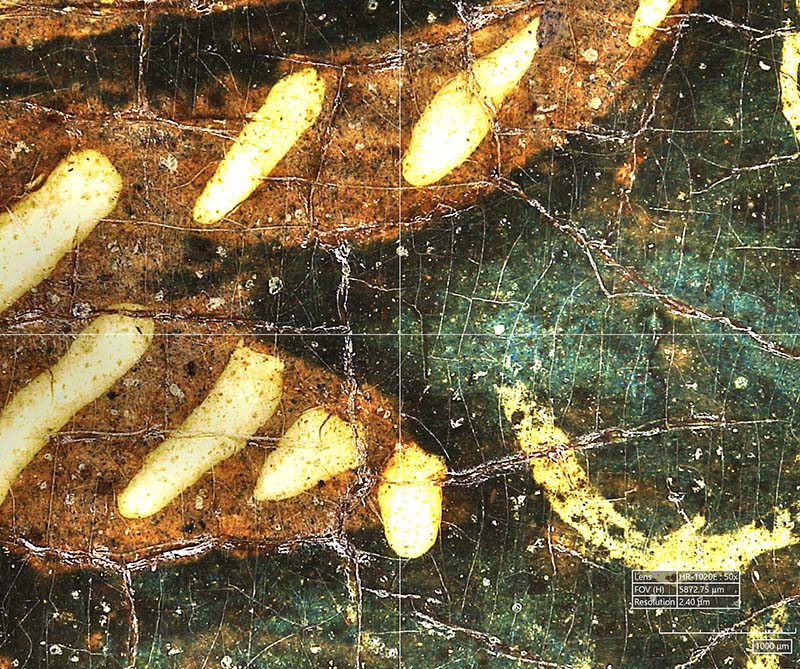
At the higher magnification, pigments particles are also clearly visible. Especially the blue, black, and white pigments which appear as small crystals.
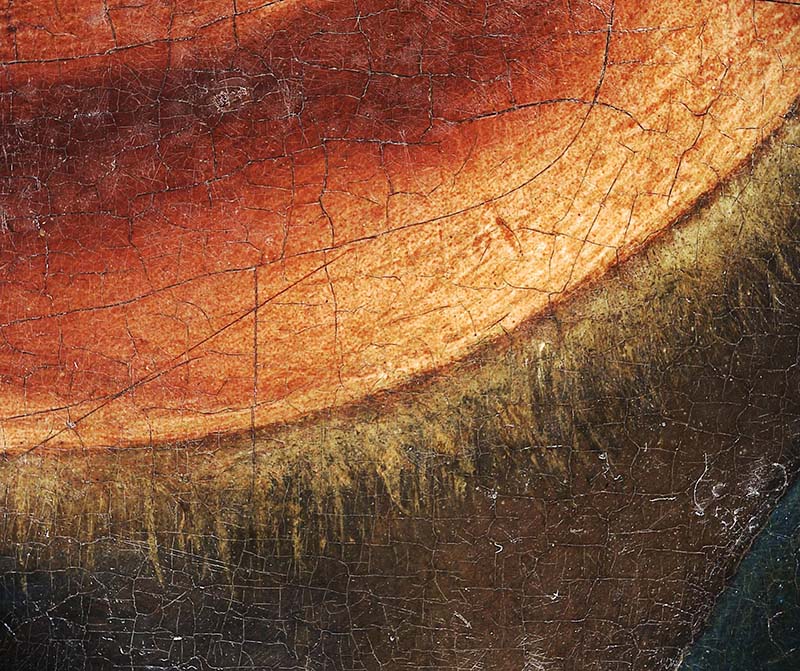
The artist rendered the soft fur lining on the inside of the Virgin’s red mantle by applying numerous small brushstrokes of light brown paint, subtly feathered to suggest its fluffiness.

To mimic iridescent silk for the tunic of the Angel on the left, the artist applied a light blue paint layer, then a thinner liquid layer of red glaze/paint.
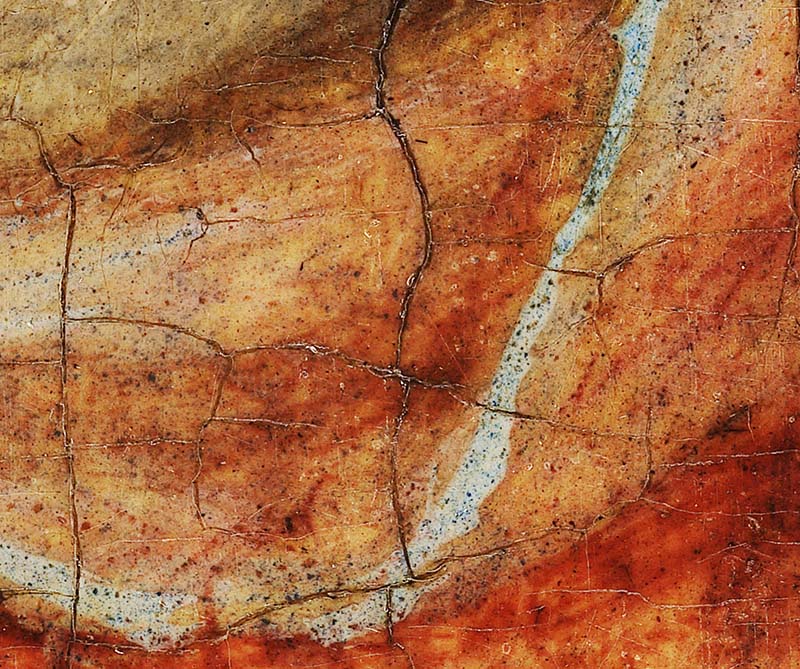
Omitting this red colour on some areas allowed the artist to suggest creases and create a highlight on the rim of the collar.
The meticulous depiction of objects such as pearls, metal bowls, glassware, cutlery, fruit and furniture, reveals the ability of the artist’s skills in reproducing them with paint. From a technical point of view, it suggests the use of minute paintbrushes and a carefully adjusted consistency of paint to achieve a complex layering, which help building shapes and creating highlights and shadows.
The possibility of generating 3D images and 3D models of the surface proved to be extremely useful to understand and show the topography of the paint surface and the varying thickness of paint layers.
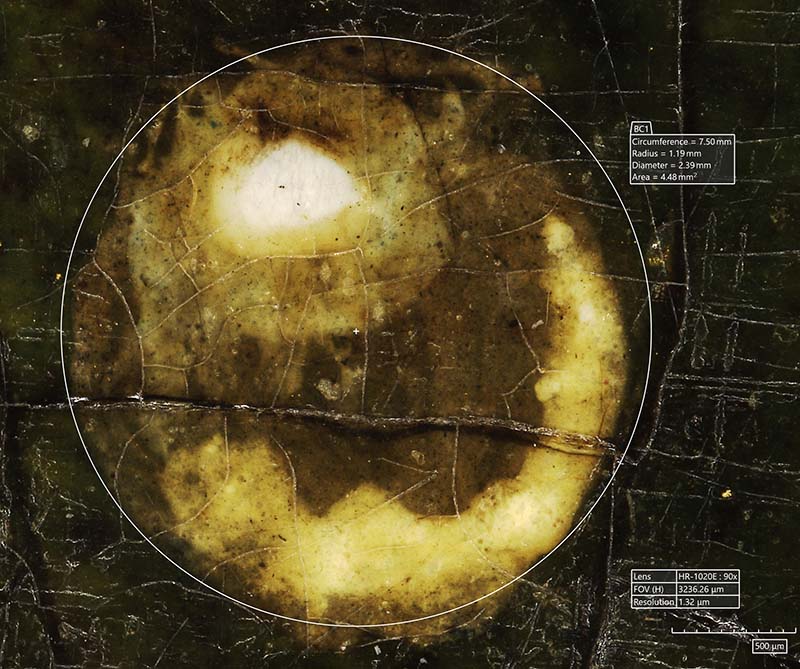
To create the pearls on the rim of the Angel’s green jacket, a very thin layer of light brown paint was applied in a circular shape over the green background; thick, light-yellow and white highlights were then applied to create the impression of a small sphere.
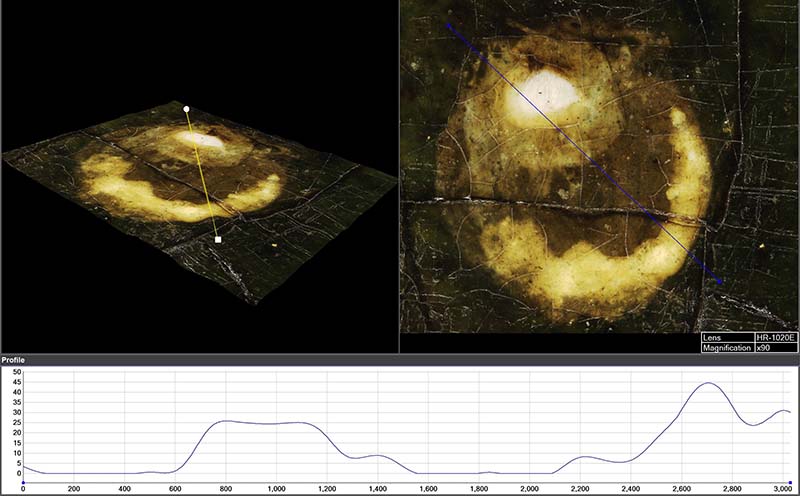
The Hirox microscope allows us to measure the size of these details - just over 2 millimetres in diameter! The 3D feature also allows us to understand the thickness of the paint layers: it is particularly noticeable, on the profile graph, the difference between the base colour and the highlights.
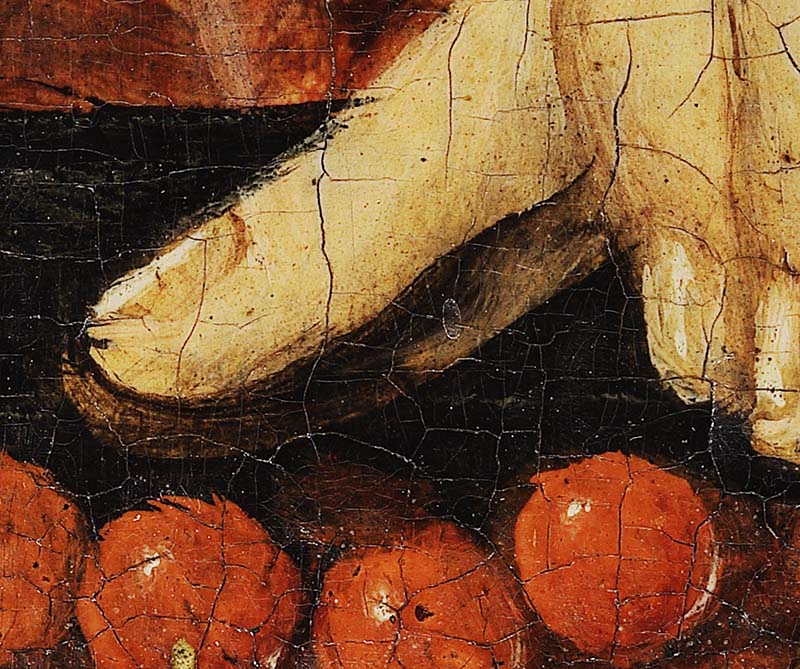
The material of the metal bowl containing cherries is suggested, by the subtle reflection of the fruit and of the Virgin’s fingers on its concave interior side.

On the face of the angel with the white dress, the artist used thin brush strokes perpendicular to the edge of the lips to blur the margins and suggests softness.
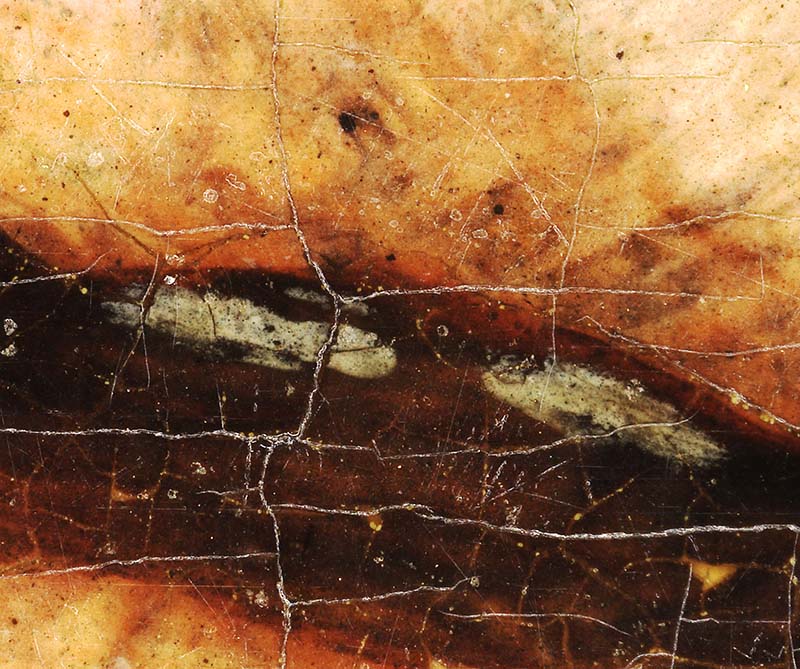
The angel’s front teeth are remarkably created with just a single straight line of white paint.
Paintings of this time typically feature a composition with the main characters in the foreground, and a background consisting of a natural landscape scattered with buildings, natural features and often very small characters and animals. Images taken with the Hirox Digital Microscope can provide an extremely valuable contribution in highlighting these smaller figures, which in most cases only measure a few millimetres in height and width and are very hard to notice on first observation of the artwork.
The scenes depicted in the background provide interesting insights into everyday life activities of the time
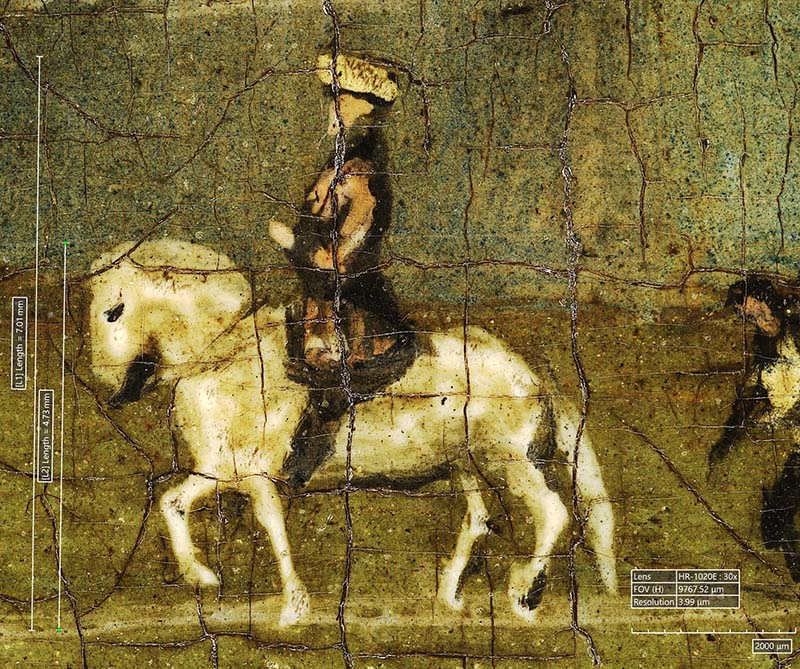
The man riding a horse on the centre-left is a skilfully created figure of approximately just 7 millimetres in height.
The man wears a knee-length tunic or cloak, rendered with pink-brownish paint and darker shadows to depict folds of the fabric and to suggest roundness and depth on the man’s back and arms. His hand is depicted with a single dot of light pink paint, enough to suggest that he’s holding the reins of his horse. The horse is painted in white paint to which black paint has been added to depict its eye and the shadows under its head, body, and hind legs to suggest depth. Bridles and saddle have also been depicted in brown paint.
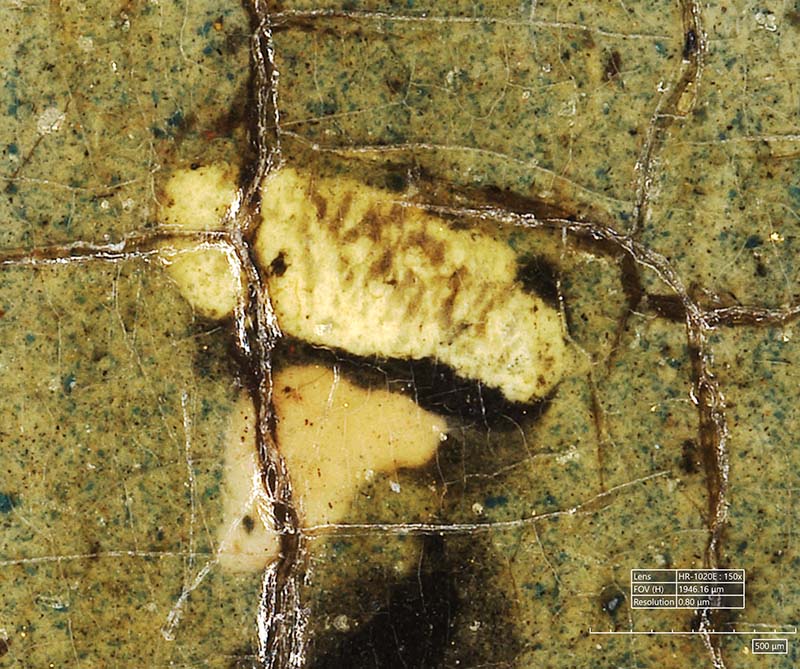
His shapeless face is somehow separated from his body and completed with the addition of dark hair and a large white hat.
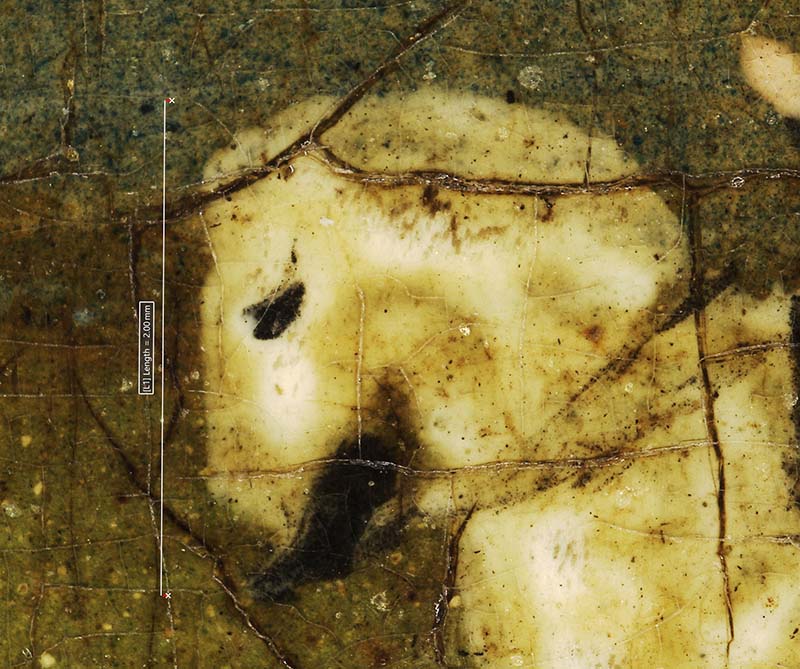
The horse’s head is just 2 millimetres high.
This work is part of ‘Beyond the Artist’s Eye’, a project supported by the Ulrike Michal Foundation for the Arts, which has allowed our conservators to examine artworks with the Hirox 3D Digital Microscope.
To see the Hirox 3D machine in action watch our video, Conservation: Infra-red and Microscopy.

